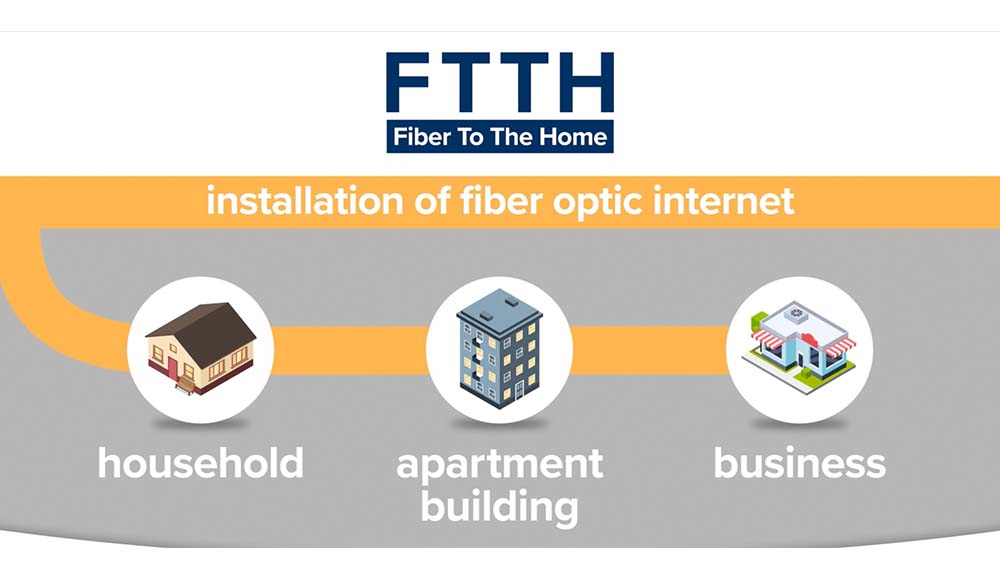How a Fiber Design Becomes Reality

In order to bring network designs to life, engineers rely on tools that aid in the earliest stages of design. Auto-design software allows engineers the ability to improve the efficiency of their designs, increase accuracy and develop designs quickly. However, to bring the design to construction and in-service, engineers and analysts must work diligently in the office and field to validate data, ensure designs are constructable and obtain permits.
Before Fiber to the Home (FTTH) projects are constructed, BHC takes fiber design through the following critical functions:
- Data Scrubbing and Validation
- Constructability Ride Out
- Final Design
- Permitting
Data Scrubbing and Validation
When utilizing auto-design software to develop a FTTH network, the output can have a range of outcomes based on the consistency and completeness of the input data. For instance, how addresses are classified and served, as well as where the conduit and vaults are placed can vary based of the source and quality of initial data used – which is vital to an efficient deployment.
To meet this challenge Geographic Information Systems (GIS) analysts are tasked with validating the input data. The initial data is gathered and checked for consistency and completeness. Addresses are classified based on an agreed upon list of classifications which are used to define the type and quantity of fiber for each address. For example, schools and government buildings need more fiber than a single residence home.
Constructability Ride-Out (CRO)
BHC’s process for CRO includes assessing constructability, verification of network service points, and real world feedback to the initial fiber design before proceeding to permitting.
After the data is cleaned up, the auto-design process is ran to produce a high-level or initial design. The CRO process begins once the initial design is complete. This is where the design faces the “real world” aspect.
The CRO process focuses on the following activity:
- Field verification of service locations including identification of multi-family units or unoccupied/undeveloped locations.
- Determination of location of cable placement including side of right-of-way or back lot line.
- Identification of constructability concerns such as utility congestion, environmental factors or conflicting structures.
- Determination of buried vs. aerial installation if applicable.
Outside Plant designers look for “real world” issues during CRO that the auto design process is unable to account for. They will address municipality or jurisdiction specific requirements on the placement of utilities and build that into the design. Designers will also consider logical drop or service entry suitability for equipment to be placed at customer locations. Accessible locations will be identified for vaults and equipment cabinets.
BHC will reflect the changes from field validation back to the fiber design. These changes will be used to generate the low-level or final design utilizing the auto-design tools which can then be sent to the project owner for review.
It’s important to note that without these processes the design is just a concept for a network. These processes and standards result in a final design that gets projects permitted and to construction.
Permitting
The permitting process begins as the low-level design is produced for individual areas. Most known entity constraints are addressed during the design phase, however, permitting issues can still arise.
Common Permitting Issues include:
- Right-of-way limits and facility placement
- Traffic control
- Utility conflicts, coordination and protection
- Working hours
- Protection of existing public infrastructure
Permit submittals are prepared conforming to any prescribed requirements by the agency. All drawings and submittals, including any required stormwater pollution prevention plans and traffic control plans, are sealed by an engineer. BHC utilizes permit submittal trackers that are accessible to the client to monitor progress and coordinate with active construction.
BHC promotes and builds an on-going relationship with permitting agencies, develops sample permit submittals and provides quick responses to concerns raised. An effective working relationship is one of the biggest keys to maintaining an efficient flow of approved permits.
Case Study – Springfield, MO FTTH network
BHC worked alongside the project team to facilitate the design of a FTTh network connecting more than 113,000 residents in previously underserved Springfield, Missouri. The CRO effort described above was performed on this project.
On this challenging project, BHC leveraged both desktop and mobile geo-spatial applications allowing staff to validate aerial/underground routing and equipment placement within the set schema. These programs allow design feedback and iterations to be communicated seamlessly.
Final Thoughts
Working together with auto-design software allows engineers the capabilities of bringing designs to construction quickly and efficiently. However, without a the actual “human” phase the high-level design first produced is more theoretical than practical. Engineers and analysts will always be needed to check for issues and address concerns in the markets they are serving.
For over 28 years BHC has been designing fiber networks and permitting through agencies across the country. For more information contact, Matt Brungardt about BHC’s CRO practices.
